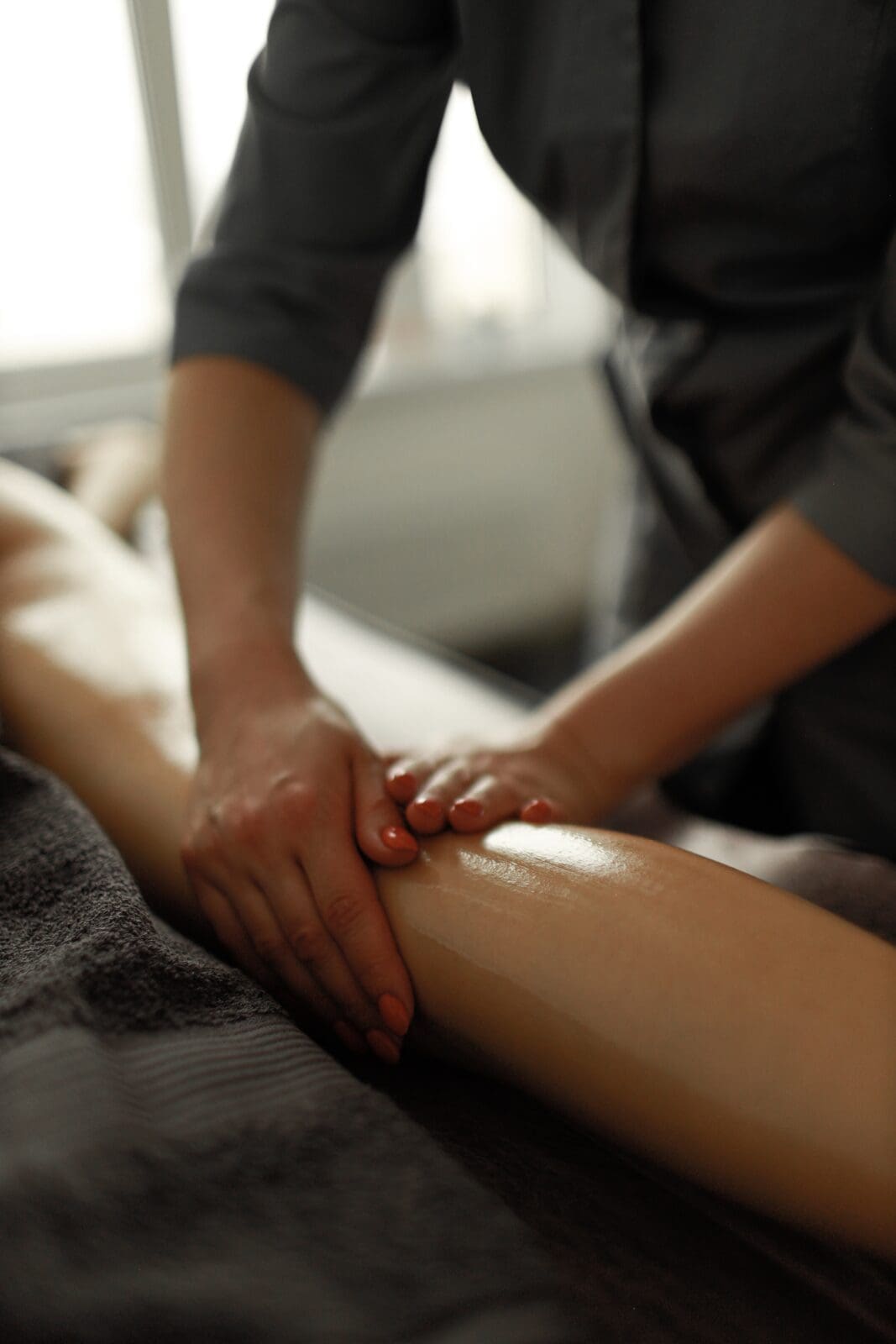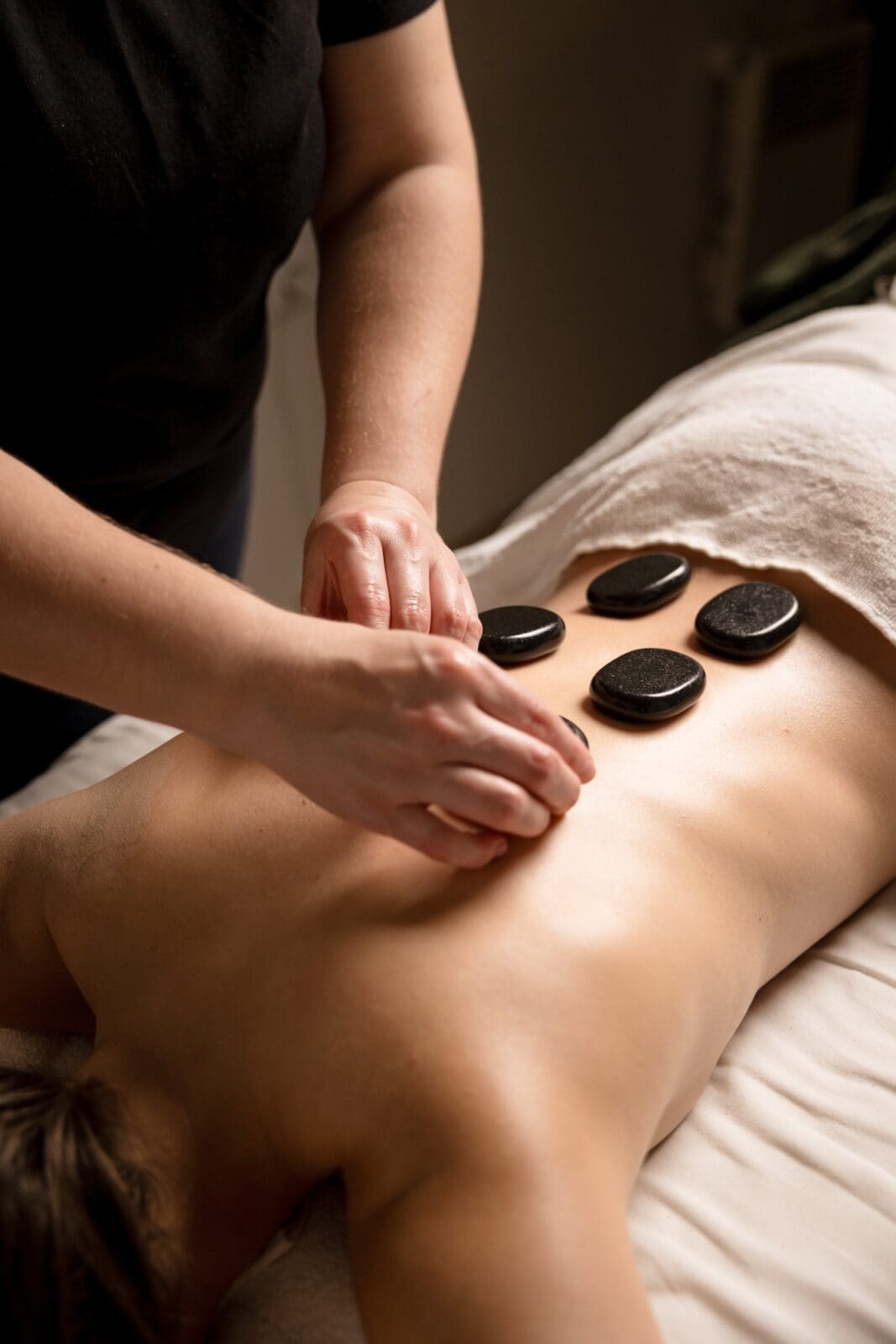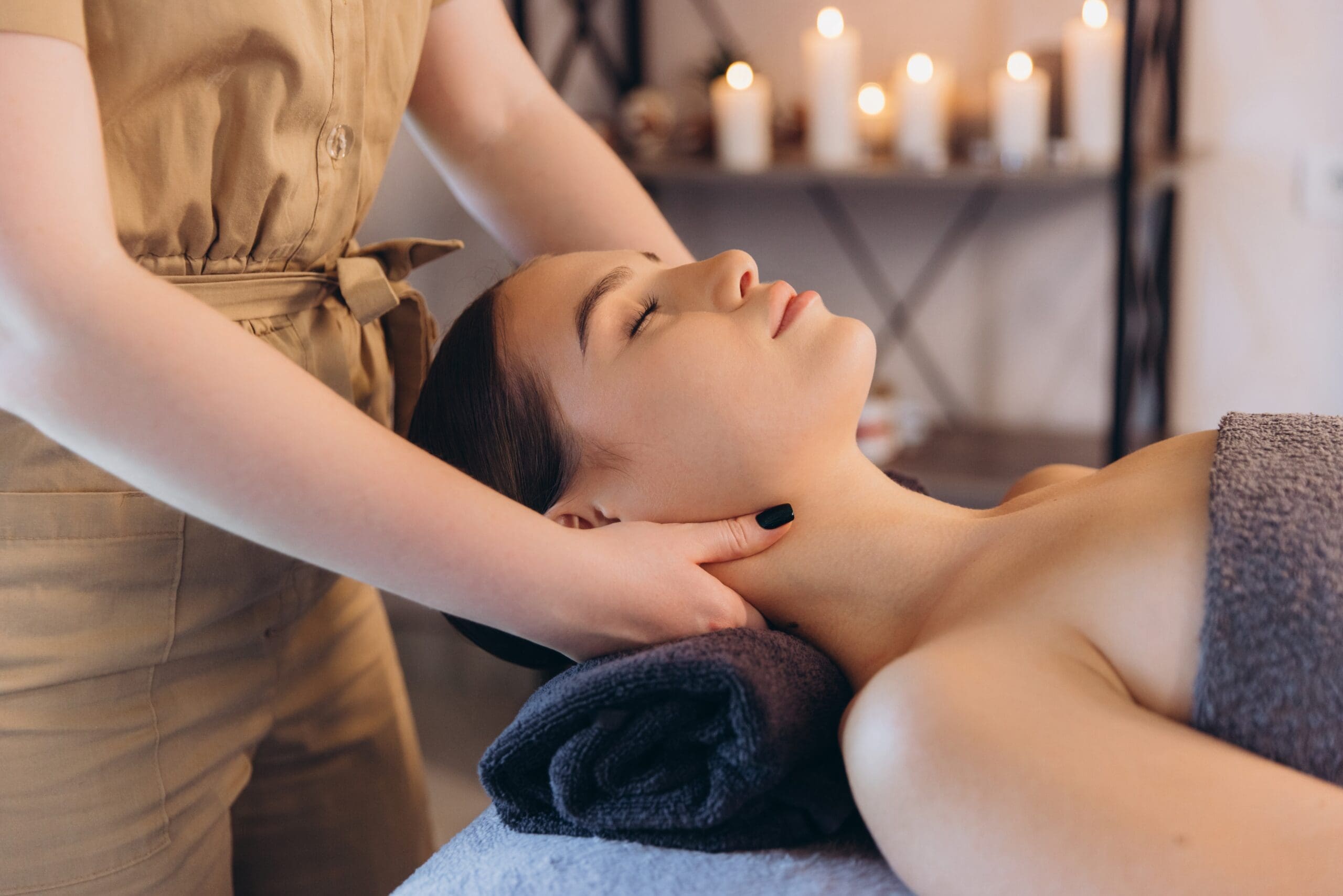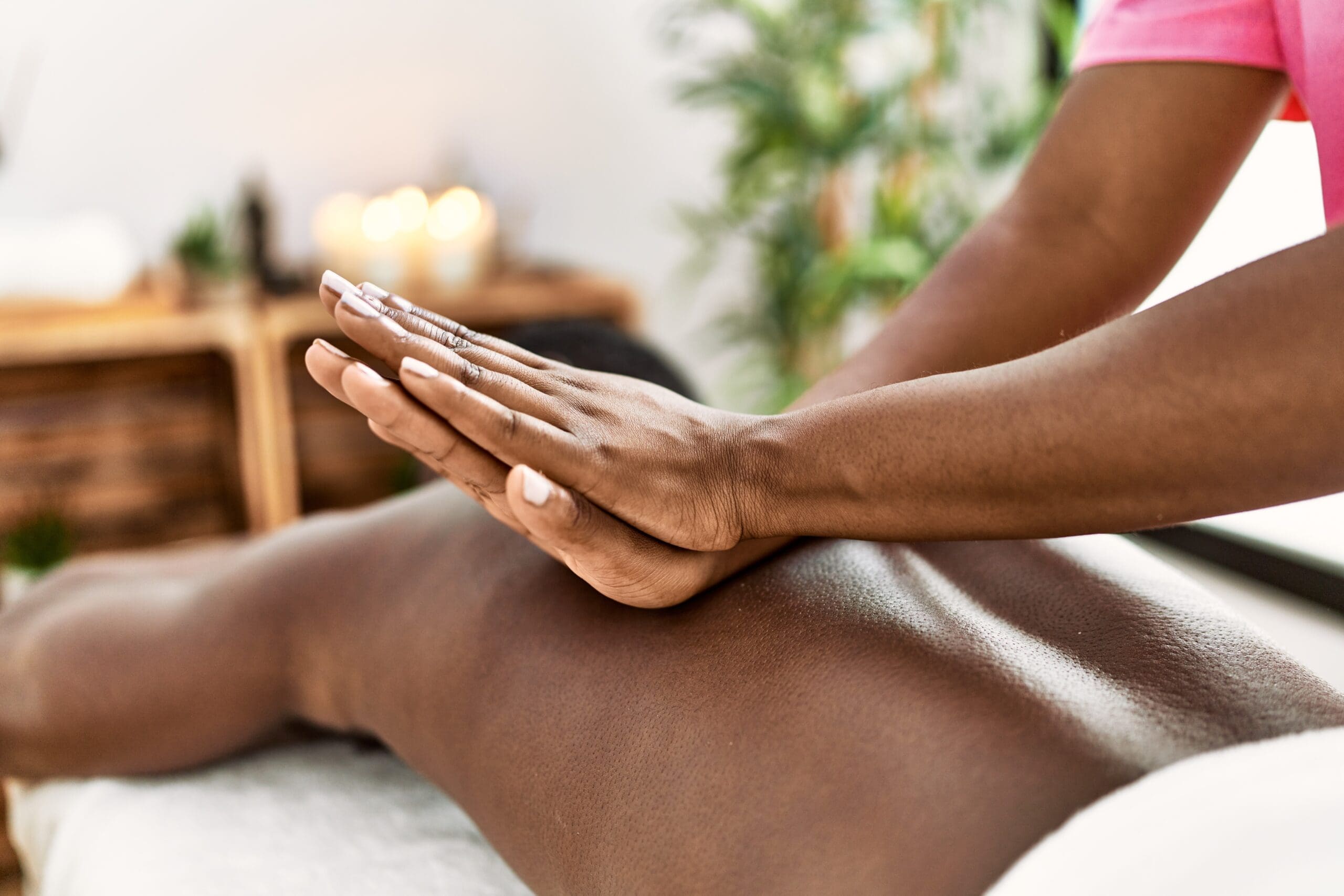Massage Therapist CV Guide
Everything you need to know about getting the perfect Massage Therapist CV
A massage therapist is a trained professional who uses various tailored treatments and techniques to manipulate the body’s soft tissues to promote relaxation, relieve tension and address physical discomfort. When employers recruit for this role, they will often look for individuals who possess a combination of certifications, technical skills, interpersonal qualities and professionalism. Candidates will confirm their suitability via a curriculum vitae (CV).
If you are recently qualified and looking for your first job as a massage therapist or want a change, having a well-crafted CV is vital. It helps potential employers assess your qualifications, experience, skills, achievements and specialities, showing whether you fit the role and their requirements. It also serves as an introduction, gives them a first impression and assists them in deciding whether to proceed with your application.
How you write your CV will depend on your professional background and preferences. However, you should highlight your qualifications, experience, skills and strengths, tailor it to the job description and keep it clear and concise. You should also let your passion and dedication for the field shine through by mentioning anything you have done to grow professionally in massage therapy.
In this article, we will provide guidance on how to write a massage therapist CV, what to include, some tips and an example to help you get started. It will hopefully increase your chances of securing an interview and, ultimately, the job.
In this Massage Therapist CV guide
What to include in a Massage Therapist CV
Knowing what to include in your CV to give you the best possible chances of getting to the interview stage can often seem daunting. Do not worry; it is simple once you understand the company’s requirements and the main sections found in most CVs.
First, consider your CV as an introduction to who you are professionally. You inform prospective employers about what you have done to make you stand out as a massage therapist and how your credentials and attributes can contribute positively to their company. It is crucial to remember that it is a brief overview and not your entire history – like a film trailer and not the whole movie.
The next thing to consider is tailoring your CV, which will help you decide what to include. You will have seen a massage therapist role you want to apply for, read through the job description and believe you are suitable. The content within your CV should include the most relevant bits of your professional history aligned with the specific job.
Now you know about the level of detail within a CV and the importance of tailoring, you will need to start writing. The best way to start is by breaking down your CV into manageable sections with main headings, such as contact information, professional summary, education, work experience, key skills, achievements and references. Let us look at this in further detail, along with some suggestions and examples of what to include.
Contact information
The first section of your CV is where you add your contact information, and it is a good place to start, as it is probably the easiest. Here, you will provide accurate and up-to-date details to enable potential employers to contact you.
- Include the following information:
- Full name – clearly state your first name and surname at the top.
- Professional title (optional) – you can add your previous or current job title, e.g. “Senior Massage Therapist”.
- Location (optional) – add your town, city or county if relevant to the job.
- Phone number – ensure it is correct and professional – no casual voicemail greetings.
- Email address – use a simple, professional email (e.g. yourname@email.com). Avoid adding one with nicknames or overly casual handles.
- LinkedIn profile or own website (optional) – only include links if updated and relevant.
- Avoid including:
- Your home address – it is irrelevant and can be a privacy risk.
- A photo – unless the job posting asks for one.
- Personal information – avoid including unnecessary details like your age, date of birth, marital status, gender, national insurance number or nationality; these are generally irrelevant in CVs and could lead to bias.
- Social media links – unless directly related to your professional work (e.g. a wellness-focused Instagram page you use for business).
Professional summary
Underneath the contact information of a CV is a brief 3-5 line paragraph highlighting your key qualifications, skills, experience, achievements and career goals, which is known as a professional summary. You may come across other names for this section, including personal statement, executive summary, professional statement or career profile. It is where you provide a snapshot of why you are an ideal candidate for the massage therapist role.
While all sections of your CV are crucial, the professional summary is one of the most important, as it is typically one of the first things potential employers will read. It sets the tone for your CV and can either capture their interest and encourage them to continue reading or the opposite. It also helps them quickly understand your value and relevance to the position.
So, what should you include in your professional summary to stand out from other candidates? Here are some suggestions:
- Previous or current job title – mention your professional title if relevant.
- Experience – include your years of experience, the types of clients you have worked with and any notable environments you have worked in, such as wellness centres, hospitals or high-profile spas.
- Credentials – specify your qualifications, certifications or training relevant to the role. For example, “Qualified massage therapist holding a Level 3 Diploma in Massage Therapy”. You could also add any registrations with a recognised body, e.g. the Complementary and Natural Healthcare Council.
- Specialisms – highlight specific massage techniques you excel in, e.g. Swedish, sports, prenatal or therapeutic massage.
- Soft skills – emphasise essential interpersonal qualities that set you apart, e.g. customer service, communication and your ability to tailor treatments to client needs.
- Career goals or passion – convey your dedication to the role and industry and to promoting clients’ physical and mental well-being.
Remember to tailor your professional summary to each massage therapist position. Here is an example:
“Certified massage therapist with a Level 3 Diploma in Massage Therapy and over 5 years of experience specialising in deep tissue and sports massage. Known for delivering tailored treatments to alleviate pain, reduce stress and promote client wellness in professional spa and clinical settings. Passionate about building lasting client relationships and contributing to holistic health approaches at [Enter company name]”.
Education
The next section of your CV after your professional summary can be your education or your work experience. You may want to add the latter first if you already have experience as a massage therapist. If you have limited direct experience, you may want to add your education first.
A well-written education section shows you have the qualifications and training to meet the role’s responsibilities and are a credible candidate. It can also make you stand out from other candidates, especially if you have unique academic achievements or relevant training.
The education section of a CV is where you list your academic qualifications and achievements. It is your chance to showcase your educational background and any relevant training and certifications that align with the massage therapist position you are applying for. Here are some examples of what to include:
- Professional certifications – add any relevant to massage therapy, such as ITEC Level 3 Diploma in Massage Therapy, VTCT qualifications or equivalent credentials.
- Training courses – include specialised courses, such as sports massage, deep tissue, aromatherapy, or reflexology.
- Relevant school education – if you are starting, you can include your secondary school education, e.g. GCSE’s, especially if you took any related courses.
- Institution name – mention the school, college, university or training provider where you obtained your certifications.
- Dates of study – list the start and completion dates.
- Additional training – highlight any training in anatomy, physiology, first aid, CPR or health & safety that enhances your profile.
- CPD (Continuing Professional Development) – if you have taken additional workshops or refresher courses, include those too.
- Licences – if you require a licence, add the details to your CV.
You could also mention any awards, distinctions or relevant modules if they add weight.
Work experience/employment history
The work experience section, before or after your education, is where you showcase your professional background and highlight the jobs you have held, the responsibilities you have undertaken, and the accomplishments you have achieved. It is often the most critical part of the CV for employers, giving them insight into your skills, expertise, and how you have applied them in real-world scenarios.
When considering what work experience to include, tailor the roles and responsibilities to the massage therapist job and add your previous positions in reverse chronological order (most recent first). Here are some pointers on what you can include in this section:
- Job titles – clearly state your previous roles, e.g. Massage therapist.
- Company names – list the businesses where you worked. If you have worked for yourself, add self-employed.
- Location: Add where you worked, i.e. town, city or county.
- Dates of employment – indicate the duration of each role, e.g. May 2020–March 2023.
- Responsibilities – summarise your primary duties and tasks in each position, such as providing various massage techniques, maintaining client records and ensuring high hygiene standards. Add your responsibilities in bullet point form and begin with a strong action verb, like “applied”, “consulted”, “performed”, “enhanced”, “achieved”, etc.
- Achievements – highlight accomplishments, such as increasing client satisfaction or exceeding targets. If you helped introduce new treatments, trained junior therapists or led promotional events, list these as well.
- Relevant skills – mention specific skills or massage techniques pertinent to the job you are applying for.
It is all about tailoring this section to make you stand out while aligning with the job requirements.
Here is an example of how you can add your work experience:
Work Experience
Massage Therapist. Relax & Renew Spa. Birmingham. January 2021 – Present.
- Provided a range of massage treatments, including Swedish, deep tissue, and aromatherapy, tailored to individual client needs.
- Consulted with clients to understand their needs and develop personalised treatment plans.
- Maintained high standards of hygiene and professionalism to ensure client comfort and satisfaction.
- Achieved a 95% client retention rate through exceptional service and personalised care.
- Assisted in promoting spa packages and events, increasing client bookings by 20%.
Key skills and achievements
Another vital section in your CV is your key skills and achievements. Skills refer to your abilities and expertise and demonstrate to prospective employers how well you match the role requirements and your competence. There are two main types of skills – hard and soft.
- Hard skills – are technical, job-specific abilities learned through education, training or practice. Some examples include
- Knowledge of massage techniques – proficiency in Swedish massage, deep tissue massage, hot stone therapy, sports massage, etc.
- Anatomy and physiology – understanding the structure and functions of the human body.
- Assessment skills – identifying areas of muscle tension or injury and tailoring massage techniques accordingly.
- Use of equipment – familiarity with massage tables, oils and specialised tools (e.g. cupping sets or rollers).
- Safety protocols – knowledge of hygiene, sanitisation and client safety standards.
- Soft skills – are interpersonal and behavioural traits that help you interact effectively with clients and colleagues. They are trickier to measure but equally vital. Some examples include:
- Communication – listening to client’s needs, explaining treatments and providing aftercare advice.
- Customer service – focussing on client satisfaction and professionalism in interactions.
- Empathy and compassion – understanding the client’s physical and emotional states to create a supportive environment.
- Professionalism – maintaining boundaries, confidentiality and a positive attitude.
- Time management – efficiently managing appointments and avoiding delays.
- Adaptability – adjusting techniques or approaches based on different clients or unexpected situations.
Focusing on skills that align with the massage therapist job and weaving in hard and soft skills is crucial, as it shows you have taken the time to understand the role and that you are a strong candidate. Also, many companies use Applicant Tracking Systems (ATS) to screen CVs. Therefore, listing key skills with relevant keywords can help your CV rank higher in the system.
You can add your skills to the work experience section or include them separately with your achievements. We will look at how to focus on your achievements later.
Other information
Most CVs have a similar structure, with the sections we have covered and a reference section. However, you can add additional headings and information to your CV if you think it will increase your chances of standing out and getting an interview. Here are some examples of others to consider:
- Certifications – you could keep your certifications separate from your education section, especially if you have many relevant ones, such as those for specific massage techniques, use of specialised tools, first aid or safety protocols.
- Continuing education – you could highlight courses, seminars, conferences or workshops you have attended to stay updated on industry practices, like aromatherapy, advanced anatomy or cupping therapy.
- Languages – you may want to mention any additional languages you speak, especially if you work with a diverse clientele.
- Volunteer experience – you could add any unpaid work, like offering massages at community events or for charitable organisations.
- Client testimonials/feedback – if appropriate, include brief client quotes or a summary of positive feedback.
- Professional memberships – mention if you are involved in organisations like the General Council for Massage Therapies, the Federation of Holistic Therapists, the National Association of Massage and Manipulative Therapists or other industry associations.
- Hobbies and interests – if you have relevant hobbies and interests that complement your professional skills, consider adding them, e.g. wellness, fitness, reading or researching the field, practising on friends and family, producing blogs or vlogs, etc.
Adding extra sections can add depth to your CV and demonstrate your commitment to professional growth and client care. Be mindful not to add too many sections to avoid your CV looking cluttered, and ensure the information is relevant and tailored to the massage therapist position.
References
The reference section is typically the last in your CV. It is where you add details of individuals (referees) who can vouch for your skills, experience and character. They are usually former employers, colleagues, teachers or mentors familiar with your work and can provide insight into your suitability for the role you are applying for.
Strong, relevant references are vital, as they help demonstrate trustworthiness, professionalism, and the quality of care you provide clients. They also give your application credibility and reassure potential employers about your reliability and expertise.
So, how do you complete the reference section of a CV? First, review the job description to see if they ask for reference details. If they do not, you can add a simple statement, “References available upon request” under the heading. It can be helpful if you are struggling for space.
If the job posting asks for references, here are some suggestions on the information to include:
- Name of referee.
- Job title.
- The name of the place they work.
- Relationship to you, e.g. “Former Manager”.
- A current phone number and professional email address.
Always ask your referees for their consent before listing them. It is courteous and ensures they are prepared to be contacted. You can also give them details of the job you are applying for so they can tailor their reference accordingly.
Tips for writing a Massage Therapist CV
- Tailor your CV for each role – customise your CV for the specific massage therapist job you are applying for. Highlight your qualifications, skills and experiences that align with the job description and use keywords to increase your chances of passing ATS filters.
- Do not make it overly detailed or complex – a CV should be a concise and clear introduction to you and your credentials. Keep it between 1 and 2 pages and only include information relevant to the specific job.
- Never exaggerate or lie on your CV – always be honest about your professional background, as employers will usually conduct checks. Lying on a CV can have serious consequences.
- Use action-orientated language – use strong action verbs like achieved, developed, led, or initiated to describe your achievements. Avoid overused clichés, such as “hardworking” or “team player” and replace them with examples of actions demonstrating these qualities.
- Use professional and consistent formatting – you can help your CV stand out by:
- Using a clean, professional layout with clear sections, headings and bullet points. Avoid long paragraphs.
- Using professional, simple and clear language, avoiding slang or overly casual expressions.
- Using the same tense throughout your CV. Typically, past tense is used for previous jobs, and present tense is used for your current role.
- Avoiding excessive use of fancy designs, colours and fonts.
- Sticking to a simple font like Arial, Calibri or Times New Roman and consistent size, e.g. 10-12 points.
- Ensuring your CV has adequate spacing to make it more visually appealing.
- Avoiding using personal photos, as it can distract and lead to bias.
- Using a digital format where possible. Save and send your CV as a PDF to ensure the formatting stays intact when viewed on different devices.
- Proofread, proofread, proofread – thoroughly check your CV and ensure it is free of spelling and grammatical errors before sending it to potential employers. Use an online spelling and grammar checker or ask a family member, friend or colleague to review it and provide feedback.

Focus on achievements
Achievements on a CV are specific accomplishments or results you have attained in your work, education or other activities that demonstrate your skills and value to potential employers. Unlike job responsibilities, which describe what you were required to do, achievements highlight how well you did it and the impact you made.
Focusing on achievements on your CV, and not just listing responsibilities, is crucial, as it showcases your expertise, professionalism and ability to contribute to client satisfaction and business success. They also differentiate you from other candidates with similar credentials by providing concrete results. Here are some examples of how to focus on your achievements:
- Tailor your accomplishments to the role – think about what you have achieved in your education, work and personal life, and identify achievements that align with the specific skills or qualities the employer wants. Example: For a role requiring sports massage expertise: “Implemented injury recovery plans for athletes, reducing rehabilitation time by 30%”.
- Concentrate on areas most relevant to massage therapy – emphasise achievements highly sought after in the field, for example:
- Have you received any accolades or recognition for your work, especially in client care and innovative service offerings?
- Have you any examples of high client ratings, positive feedback or testimonials?
- Have you completed any certifications, courses or workshops to grow professionally?
- Have you helped grow a business or improve operations?
- Do you have skills in specialised techniques or certifications that distinguish you from others?
- Quantify your achievements – use numbers, percentages and other metrics to make your impact tangible and impressive. For example, “Grew client retention rate by 20% through personalised follow-ups and consistent quality of care”.
- Use action-oriented language – begin each achievement with strong action verbs to make your impact clear and compelling. Some examples include:
- Client care – Assisted, Consulted, Delivered.
- Techniques – Performed, Applied, Customised.
- Business impact – Improved, Promoted, Generated.
- Operations – Scheduled, Managed, Monitored.
- Use the STAR method to frame your achievements
- Situation – briefly describe the context (e.g. “Managed a spa with declining client retention”).
- Task – explain your responsibility (e.g. “Tasked with improving client loyalty”).
- Action – highlight what you did (e.g. “Introduced personalised care plans and follow-ups”).
- Result – share measurable outcomes (e.g. “Increased retention by 20% in six months”).
You can weave your achievements into your work experience or have a separate section labelled “Key Achievements” or “Professional Accomplishments”. The latter may be preferable if you have many stand-out examples.
Describe your experience
When prospective employers read through your CV, they will be looking to see if you have relevant experience that makes you suitable for the massage therapist role. Therefore, it is crucial to describe your experience in a way that provides a clear picture of your previous roles, responsibilities, accomplishments and professional abilities.
Describing your experience involves identifying your most relevant past contributions and providing sufficient (but concise) information to allow the reader to understand how you align with the job. You will typically do this in two main sections of your CV – your professional summary and work experience.
- Professional summary – here, you will describe your experience by focusing on your key skills, years of expertise and the value you bring to the role. Your descriptions should be concise and tailored to the massage therapist position you are applying for. For example, “Experienced massage therapist with 5+ years in wellness, specialising in deep tissue and sports massage. Proven record of enhancing client satisfaction and retention through personalised care”.
- Work experience – your experience descriptions will mostly be in this section, and you should customise them for the job. You will include your previous job titles, employers, locations and dates, followed by key responsibilities and contributions. Keep descriptions concise, emphasising measurable achievements or how you benefited clients and employers.
If you have limited direct experience as a massage therapist, i.e. recently qualified, you can still describe your experience effectively. Focus on transferable skills, related experience and relevant achievements to present yourself as a strong candidate. Here are some pointers on what you can include in your descriptions:
- Focus on transferable skills – these are skills you developed in one field, which you can use in others. Highlight those vital for massage therapy, such as:
- Communication, e.g. effectively understanding and responding to client needs.
- Time management, e.g. managing client schedules and staying punctual.
- Attention to detail, e.g. ensuring treatment rooms are prepared and maintaining hygiene standards.
- Emphasise qualifications and training – highlight any coursework, diplomas or certifications you have completed. Include hands-on practice gained during training, such as internships or practice sessions during coursework. For example, “Completed 120+ hours of supervised practice in Level 3 Diploma in Massage Therapy, including Swedish massage, aromatherapy and deep tissue techniques”.
- Highlight related work experience – if you have held roles in wellness, customer service, or healthcare, emphasise responsibilities that overlap with massage therapy, e.g. customer service, hands-on experience, health, safety and hygiene, use of booking systems, etc.
- Mention informal or volunteer experience – if you have practised massage therapy on friends or family or as part of volunteer work, include it as relevant experience.
- Include relevant hobbies – add interests as experience if they are relevant to massage therapy or demonstrate transferable skills. For example, physical fitness and care, wellness (yoga/meditation), self-guided learning, attending workshops, writing blogs, social media influencing, etc.
- Tailor your professional summary – use your professional summary or cover letter to create a positive first impression. An example would be: “Recently qualified massage therapist with a Level 3 Diploma in Massage Therapy and hands-on training in Swedish and aromatherapy techniques. Experienced in client care, scheduling and wellness environments, with a passion for improving client well-being and providing exceptional service”.
Presenting your relevant experience and transferable skills convincingly and passionately can help you stand out to potential employers, even if your direct massage therapy experience is limited.

Tailor your CV to the Massage Therapist position
Tailoring a CV means customising it to match the requirements of a specific job or employer. Instead of sending a generic CV, you highlight your qualifications, skills, experience and achievements most relevant to the role.
We have talked about tailoring your CV many times in this article, as it is crucial to success. It enables potential employers to see how you fit their needs, shows your genuine interest in the role and helps you stand out from others who have sent generic CVs. It can create a positive first impression and increase your chances of getting that all-important interview invite.
Here are some pointers to help you tailor your CV to the massage therapist position:
- Analyse the job description
- Identify the key skills, experience, techniques and qualities the employer wants, e.g. deep tissue massage, client satisfaction, teamwork, etc.
- Note any specific certifications or training required (e.g. Level 3 Diploma in Massage Therapy.
- Look for keywords and phrases like “therapeutic techniques”, “client retention”, or “wellness programs” to use in your CV and to pass applicant tracking systems (ATS).
- Research the company
- Find out more about the company through its website and social media pages.
- Identify their goals, values, ethos and mission statement.
- Incorporate some of the language they use in your CV, especially in your professional summary.
- Review and adjust various sections in your CV
- Customise your professional summary to align with the role, highlighting qualifications, skills, experience, passion and career goals specific to massage therapy. Mention the job title and the company name to show you have tailored your CV to this position or company.
- Tailor your work experience and focus on responsibilities and achievements directly relevant to the job. If you have experience in similar roles, emphasise transferable skills. Remove or minimise unrelated roles.
- Create a key skills section that reflects the job’s requirements and includes hard and soft skills. For example, if they mention proficiency in Swedish massage and strong communication skills, focus on these areas.
- Include relevant certifications, training, or professional memberships in your CV if mentioned in the job description and if you hold them.
- Add, remove or reorder main sections where necessary and do not be afraid to adjust your CV structure to align with the role.
- Tailor your cover letter
- Do not forget to customise your cover letter if you need to send one with your CV.
- Address it to the individual in the posting and reference the company.
- Focus on relevant accomplishments and align your experiences and skills with the job description.
- Use examples from your CV to support your claims and detail what makes you the best fit.
Following these steps ensures your CV aligns perfectly with the massage therapist role you are applying for, increasing your chances of impressing potential employers.
Good luck!



